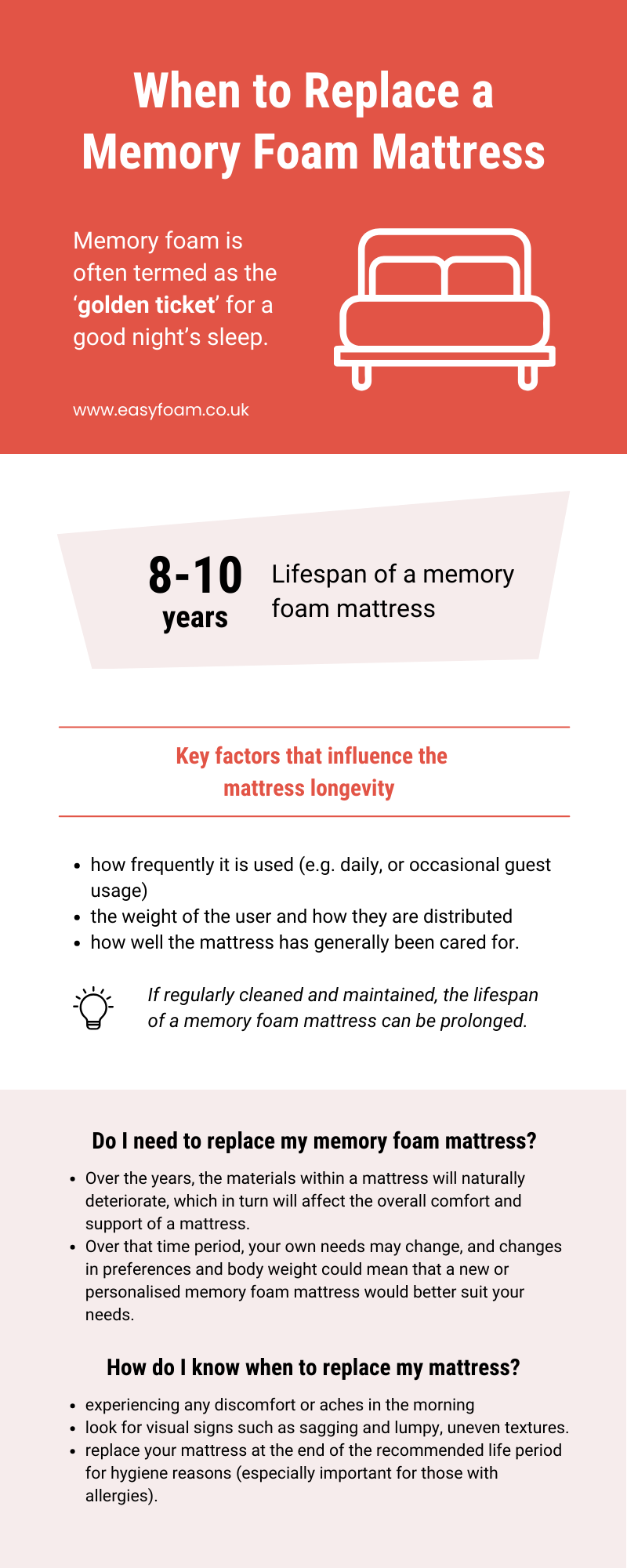When to Replace A Memory Foam Mattress

Memory foam is often termed as the ‘golden ticket’ for a good night’s sleep. Credited with specialist properties, memory foam mattresses are praised for their comfort, pressure relieving qualities and overall durability.
That said, just like any other furniture product, memory foam mattresses do have a lifespan and will eventually need replacing. But what are the telltale signs that a memory foam mattress needs to be replaced?
What’s the lifespan of a memory foam mattress?
As expected, the overall lifespan of a memory foam mattress depends on a range of factors, including overall usage. However, most memory foam mattresses last for between 8-10 years.
Factors influencing the longevity of a mattress include how frequently it is used (e.g. daily, or occasional guest usage), the weight of the user and how they are distributed, and how well the mattress has generally been cared for. If regularly cleaned and maintained, the lifespan of a memory foam mattress can be prolonged.
Do I need to replace my memory foam mattress?
The short answer is yes, in order to maintain the highest levels of comfort and quality memory foam is best known for. Over the years the materials within a mattress will naturally deteriorate, which in turn will affect the overall comfort and support of a mattress.
Similarly, over that time period your own needs may change, and changes in preferences and body weight could mean that a new or personalised memory foam mattress would better suit your needs. If your memory foam mattress doesn’t feel as comfortable as it once was, it’s likely time to consider replacing it.
How do I know when to replace my mattress?
There are a few telltale signs that show your mattress is reaching the end of its life. One of the most obvious ones is whether you are experiencing any discomfort or aches in the morning. If you find yourself waking up in pain, it may be a sign that your mattress is no longer providing the support you need. As foam deteriorates, it is not as effective at relieving pressure across the body.
Similarly, you should look for visual signs such as sagging and lumpy, uneven textures. Any noticeable sagging or indentations in the mattress are a sign that the memory foam is losing its resilience and is therefore ‘sinking’ in various places.
For hygiene reasons, it’s also a good idea to replace your mattress at the end of the recommended life period. This is particularly important for those with allergies. Just like any soft furnishing, memory foam can accumulate allergens, bacteria and dust mites, so any increase in allergies may be a sign that it’s time for a replacement. Your mattress should be replaced for hygiene reasons even if you have undertaken regular cleaning and maintenance.
How often should a memory foam mattress be replaced?
The average lifespan for a memory foam mattress is between 8-10 years, depending on many of the factors listed above. By keeping an eye on its overall quality and condition, you’ll be able to best determine when it needs to be replaced.

